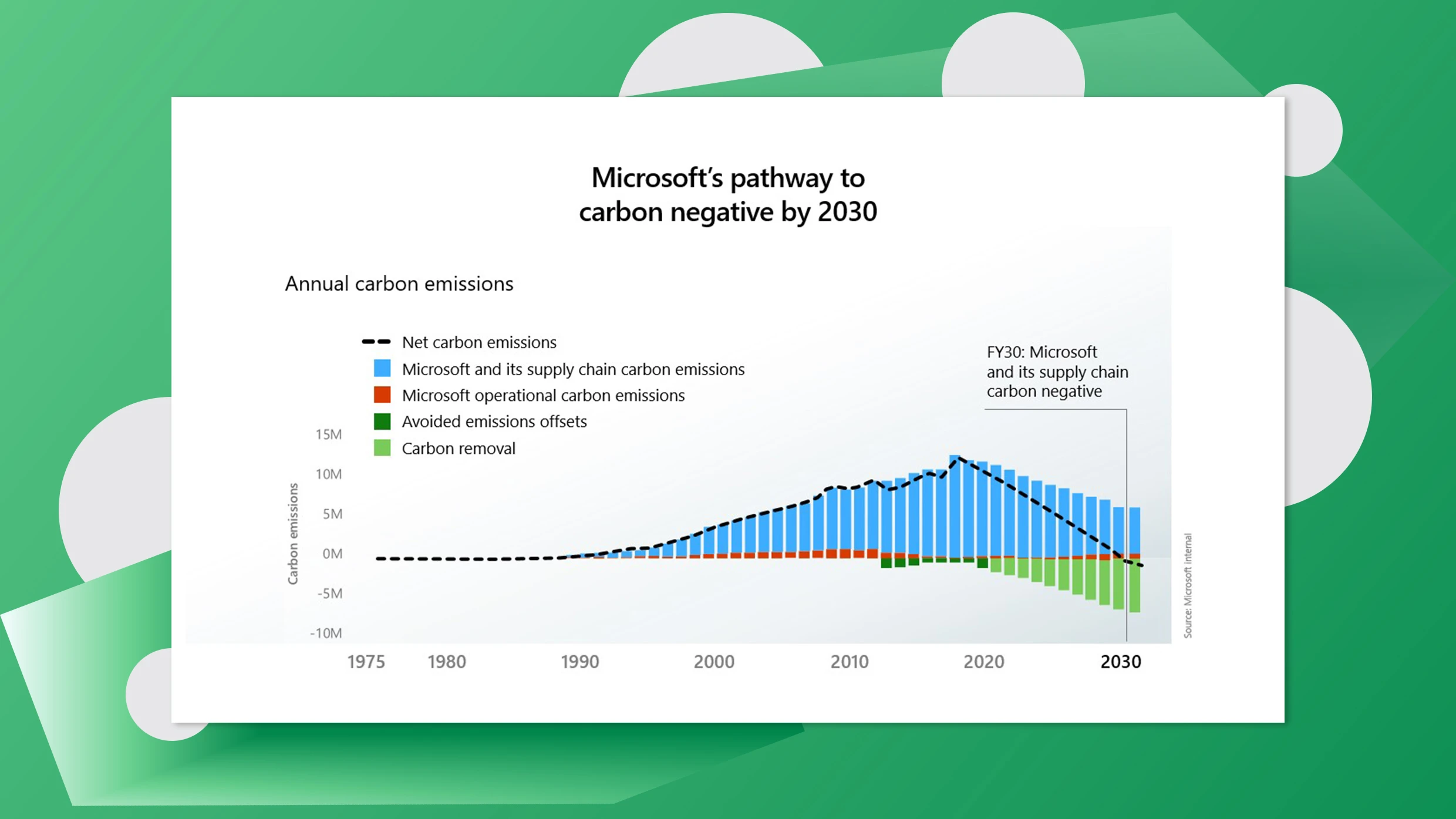This year, Microsoft expects to emit 16 million metric tons of CO2. But by 2030, the tech giant plans to become carbon negative, meaning that it will remove more carbon from the atmosphere than it emits. By 2050, it will also remove all of the carbon it has emitted since the company was founded in 1975.
“The scientific consensus is clear,” Satya Nadella, Microsoft’s CEO, said in an event announcing the new goals today. “The world today is confronted with an urgent carbon crisis. If we don’t curve the emissions, and temperatures continues to climb, science tells us the results will be devastating. Each of us is going to need to take action. And that includes businesses. No one company can solve this macro challenge alone. But as a global technology company, we have a particular responsibility to do our part.”
To have a chance of limiting global warming to 1.5 degrees Celsius—something that’s necessary to avoid the worst impacts of climate change—the Intergovernmental Panel on Climate Change has suggested that we need to slash global emissions around 45% by 2030. Right now, the world emits around 50 billion metric tons of of CO2 a year. By 2050, we need to get to net zero.
By 2030, Microsoft plans to cut its emissions 50% across its entire value chain—which includes emissions from both their suppliers and customers using their products—and will invest in “negative emissions” tech to offset the rest. The company’s direct emissions will shrink to almost nothing. One part of the plan is a shift to 100% renewable electricity by 2025.
Under the most common metrics used in the corporate world that include buying renewable offsets to mitigate existing carbon-producing energy, Microsoft already uses fully renewable electricity—it has invested in multiple wind and solar projects and has been buying renewable energy credits equal to the rest of the electricity it uses since 2012. But it wants to help bring new local renewable power to every grid where it operates. When it modernizes its campuses in Silicon Valley and Puget Sound, it’s aiming for zero carbon, LEED Platinum designs. At all of its campuses, it plans to electrify its fleet of vehicles.

The largest piece of its total carbon footprint is outside of its direct control. Of the 16 million metric tons of carbon it will emit this year, around 12 million will be so-called “Scope 3” emissions from the rest of its value chain—the emissions, for example, from the materials used to make an Xbox, or the footprint of the electricity that consumers use when they play games on the Xbox. Since 2012, the company has had an internal carbon fee that it charges each department to incentivize shrinking its carbon footprint; by July, the fee will be expanded to also cover these Scope 3 emissions from its value chain. In July of 2021, the company will implement new procurement processes that consider supplier emissions. It will also begin using other tools to help convince suppliers to reduce emissions.
Microsoft is also developing new tools to help its customers, like a sustainability calculator launched today that lets them calculate the carbon footprint of their cloud operations in an in-house data center and compare that to Microsoft’s Azure services. It will continue to work with some customers on new emission-shrinking tech; one past project created software that can help buildings reduce energy consumption. Controversially, the company says that it plans to continue working with oil and gas companies; it has been criticized for offering services that essentially help extract more fossil fuels. Microsoft argues that addressing the climate crisis will mean involving everyone—especially the largest polluters—and that it therefore needs to engage with everyone. It isn’t yet clear how it may help those companies reduce emissions.
For the remainder of its carbon footprint, Microsoft plans to invest in projects that can recapture carbon from the air, like reforestation. The company is already “carbon neutral,” but wanted to go farther; until now, it had been supporting some projects that avoid emissions, such as programs that pay forest owners to keep trees standing. To be truly “carbon negative,” all of the programs it supports by 2030 will have to physically remove carbon.
That’s likely to include restoring forests, but could also mean supporting carbon sequestration in soil, and eventually technology like direct air capture machines that suck carbon from the atmosphere. Over time, those projects will need to be large enough to allow the company achieve its goal of removing not just the carbon it’s currently emitting, but enough to account for all the carbon as it has emitted throughout its history—pointing to the fact that part of the solution isn’t just slashing emissions now, but dealing with all of the excess carbon that’s already in the atmosphere. The company will also advocate for better climate policy.
A new $1 billion Climate Innovation Fund, which the company also announced today, will help implement decarbonization technology, and also invest in new projects to help accelerate the growth of the carbon removal industry. The company hopes to help push the cost of critical technology down so it can be widely adopted. “The technology that we will need to solve this problem does not exist today, at least not in the way that will make it affordable and effective in the way that the world will require it,” Brad Smith, Microsoft’s president, told reporters in a briefing earlier this week.
Recognize your brand’s excellence by applying to this year’s Brands That Matter Awards before the early-rate deadline, May 3.
